TV Station NHK
 Beyond the Naked Eye | Food Poisoning — the creepy micro-sized devil
Beyond the Naked Eye | Food Poisoning — the creepy micro-sized devil
DC340901![]()
アインシュタインの眼 | 食中毒 しのびよるミクロの悪魔 [NHK]
![]()
![]()
![]()
![]()
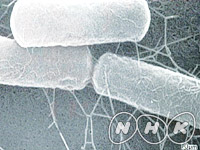
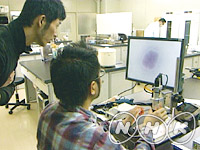
|Length : 44min. |Year : 2009 |
Hot seasons bring about spates of food poisoning incidents. Bacteria invisible to the naked eye attach and multiply on foods; when consumed in the human body, these bacteria cause serious symptoms such as diarrhea and vomiting. In this program, the multiplying process of such bacteria is caught on footage utilizing a state-of-the-art camera which is able to capture even the slightest amount of colors. The workings of bacteria such as o-157, which has the ability to withstand gastric acid, and the heat-resistant bacillus cereus, are also investigated.
 The Mark of Beauty | Mount Fuji
The Mark of Beauty | Mount Fuji
DC331321![]()
美の壺 | 私の富士山 [NHK]
![]()
![]()
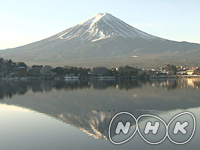
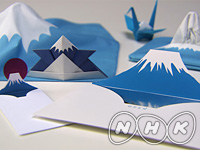
|Length : 29min. |Year : 2013 |
Mount Fuji has recently been named a UNESCO World Heritage site. The mountain has long been engrained in the Japanese soul as an object of worship and as the source of countless pieces of art. This episode takes a look into the deep relationship Fuji shares with water, which is indispensable to the view of the mountain. It also explores the reason why many Japanese people share the image of the mountain as having a summit with three peaks. From the Middle Ages to the present day, Mount Fuji has been the theme for many pieces of art produced by countless painters and creators, and as such, has been admired by the people in everyday life. We delve into the deep beauty of the mountain through the keywords of "water", "worship", and "design".
 The Mark of Beauty | Sakura
The Mark of Beauty | Sakura
DC331320![]()
美の壺 | 桜 [NHK]
![]()
![]()
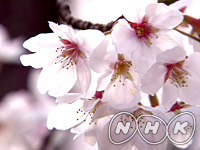
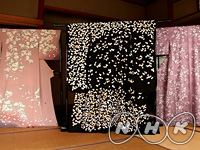
|Length : 29min. |Year : 2013 |
In Japan, the sakura cherry blossom is synonymous with spring. The people of Japan have long adored the sight of how the sakura blossoms bloom proudly at once, before soon dropping their petals ever so elegantly. Such beauty of the sakura has given birth to countless beautiful handicraft pieces. The sakura kanzashi hairpin, which features realistic, faint-colored sakura petals, is popular among young women. The delicate hue of the dyed fabric called sakurazome is produced using the color that dwells inside the trunk of sakura trees. We also introduce the mystical beauty the sakura reveals when it is viewed at night; it almost looks like the flowers are emitting light. Furthermore, we look at how the famous writer Chiyo Uno was so intrigued by the sight of falling sakura petals that she produced countless elegant kimonos of that theme. We thoroughly savor the beauty of the sakura, which never ceases to enthrall the people of Japan.
 The Mark of Beauty | The Donabe Pot
The Mark of Beauty | The Donabe Pot
DC331319![]()
美の壺 | 土鍋 [NHK]
![]()
![]()
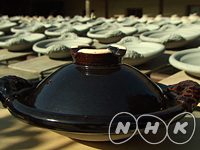
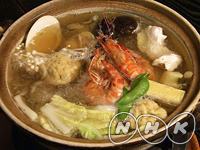
|Length : 29min. |Year : 2013 |
Winter in Japan exists together with hot pot dishes, and the main character of such delicious dishes is the donabe earthenware pot. While it is a cooking utensil, the donabe is at the same time a serving dish ensconced at the center of the dining table, and adored by everyone. That is why the donabe has needed to have the beauty to adorn the dining table, besides the practical features to tolerate heat, retain heat, and not break. This episode features the soft-shelled turtle hot pot that is served at an established Japanese restaurant; the beauty in donabe pots of Iga City, loved by many prominent individuals; and other unique earthenware pots from around the world. We dive into the unknown world of beauty that lies in the simple and warm donabe earthenware pot.
 The Mark of Beauty | Confectionary of Kanazawa
The Mark of Beauty | Confectionary of Kanazawa
DC331318![]()
美の壺 | 金沢の和菓子 [NHK]
![]()
![]()
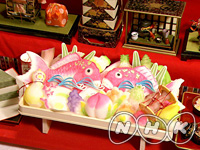
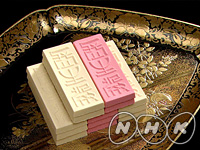
|Length : 29min. |Year : 2013 |
Kanazawa is one of Japan's top three confectionary cities. This former castle town with more than 400 years of history is bustling with beautiful Japanese confectionaries that owe their origin to the snowy Kanazawa scenery. The city offers a myriad of Japanese sweets: from candy adorned with vivid colors that stand out in the snow; rakugan, the confectionary of supreme elegance that was loved by samurais; to cakes that add color to a tea ceremony. As Kanazawa is a city with a tradition of handicraft production, the episode also introduces local wares to serve confectionary on. In addition, we follow a confectioner as he goes through trial and error to produce confectionary to best match a Kanazawa-made ware. We take a close look at the former castle town's sweets during winter, when Kanazawa is at the prime of its beauty.














